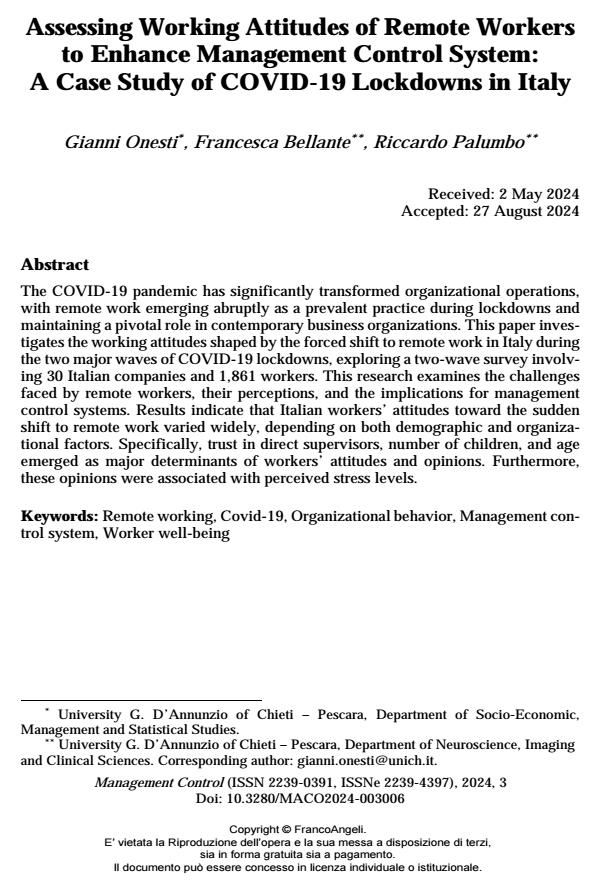Assessing Working Attitudes of Remote Workers to Enhance Management Control System: A Case Study of COVID-19 Lockdowns in Italy
Titolo Rivista MANAGEMENT CONTROL
Autori/Curatori Gianni Onesti, Francesca Bellante, Riccardo Palumbo
Anno di pubblicazione 2024 Fascicolo 2024/3
Lingua Inglese Numero pagine 24 P. 111-134 Dimensione file 184 KB
DOI 10.3280/MACO2024-003006
Il DOI è il codice a barre della proprietà intellettuale: per saperne di più
clicca qui
Qui sotto puoi vedere in anteprima la prima pagina di questo articolo.
Se questo articolo ti interessa, lo puoi acquistare (e scaricare in formato pdf) seguendo le facili indicazioni per acquistare il download credit. Acquista Download Credits per scaricare questo Articolo in formato PDF

FrancoAngeli è membro della Publishers International Linking Association, Inc (PILA)associazione indipendente e non profit per facilitare (attraverso i servizi tecnologici implementati da CrossRef.org) l’accesso degli studiosi ai contenuti digitali nelle pubblicazioni professionali e scientifiche
The COVID-19 pandemic has significantly transformed organizational operations, with remote work emerging abruptly as a prevalent practice during lockdowns and maintaining a pivotal role in contemporary business organizations. This paper in-vestigates the working attitudes shaped by the forced shift to remote work in Italy during the two major waves of COVID-19 lockdowns, exploring a two-wave sur-vey involving 30 Italian companies and 1,861 workers. This research examines the challenges faced by remote workers, their perceptions, and the implications for management control systems. Results indicate that Italian workers’ attitudes to-ward the sudden shift to remote work varied widely, depending on both demo-graphic and organizational factors. Specifically, trust in direct supervisors, number of children, and age emerged as major determinants of workers’ attitudes and opinions. Furthermore, these opinions were associated with perceived stress levels.
Parole chiave:Remote working, Covid-19, Organizational behavior, Management control system, Worker well-being
Gianni Onesti, Francesca Bellante, Riccardo Palumbo, Assessing Working Attitudes of Remote Workers to Enhance Management Control System: A Case Study of COVID-19 Lockdowns in Italy in "MANAGEMENT CONTROL" 3/2024, pp 111-134, DOI: 10.3280/MACO2024-003006